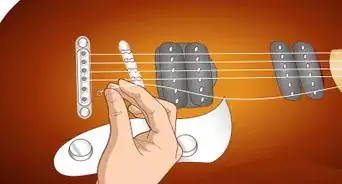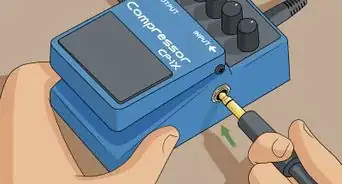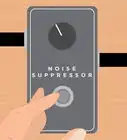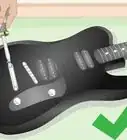wikiHow is a “wiki,” similar to Wikipedia, which means that many of our articles are co-written by multiple authors. To create this article, 12 people, some anonymous, worked to edit and improve it over time.
This article has been viewed 104,211 times.
Learn more...
The Fender Stratocaster, known colloquially as a "Strat," is one of the most popular electric guitars in the world. It is used by professional musicians and amateurs alike, and has a reputation for being the most copied style of electric guitar. Strats are known for their solid construction and craftsmanship, especially among the higher-end models. A new Stratocaster will likely only need minor adjustment before playing. Perhaps the most crucial aspect of a new Strat that should be adjusted is its intonation. You can adjust intonation on a Strat simply by adjusting the position of the bridge saddles.
Steps
-
1Make sure you understand what intonation is. On a fretted instrument like a guitar, intonation is the instrument's ability to produce fretted notes at the correct pitch all the way up the neck. Therefore, intonation hinges on the length of the string from saddle to nut. If the string is too long or short, the guitar will play farther and farther out of tune as you move up the neck.[1]
-
2Change the strings on your Strat, if necessary. Intonation should be checked every time you change a guitar's strings, so if your current strings are worn, consider changing them before adjusting the intonation.[2] Each time you change strings, the tension in the strings may change or you may inadvertently move the bridge saddles, which will alter the intonation.Advertisement
-
3Tune the lowest guitar string to an 'E.' With the guitar in playing position, tune the lowest string to an "E." Use a tuner for this, and take the time to get it right; precision counts when adjusting your Strat's intonation. If you regularly use a tuning other than standard E, you should tune the string to the note called for in your preferred tuning.[3]
-
4Sound the natural harmonic at the lowest string's 12th fret. To play this harmonic, lightly touch the string above the 12th fret and pluck it. The note sounded will be exactly one octave above the open string's pitch, because only half of the string is vibrating now.
- Note that this harmonic can never be out of tune, because it resonates based on a fundamental principle. Half of the string's length will always sound at exactly one octave above the full string's pitch.
-
5Pluck the lowest string at the 12th fret. After listening to the harmonic, fret the string at the 12th fret and play a note. The 2 notes should sound exactly the same. The goal is to adjust the string's length so that the 12th fret bifurcates it exactly in half. If the picked note is higher in pitch than the harmonic, you must lengthen the string. If the picked note is lower than the harmonic, you need to shorten the string.[4]
-
6Adjust the bridge saddle for the lowest string. The saddle of the Strat's bridge is the rectangular metal piece on which the string rests at its highest point. To adjust it, simply use a Phillips screwdriver to tighten or loosen the screw at the back of the saddle. Tightening the screw will lengthen the string, while loosening it will shorten the string. Keep making minute adjustments until the 12th fret is exactly the same pitch as its natural harmonic.[5]
-
7Repeat the process for the remaining strings. You may need to check each string's intonation a second time to make more minute adjustments, as adjusting the tension of each individual string will affect the others.
Things You'll Need
- Stratocaster
- Tuner
- Pick
- Phillips screwdriver
References
- ↑ https://www.yourguitaracademy.com/courses/james-collins/lessons/intonation
- ↑ https://www.guitaranswerguy.com/guitar-string-wont-intonate/
- ↑ https://hazeguitars.com/blog/setting-intonation-on-a-strat
- ↑ https://www.youtube.com/watch?v=gEMUE1zcLl4
- ↑ https://www.fender.com/articles/tech-talk/intonation-101
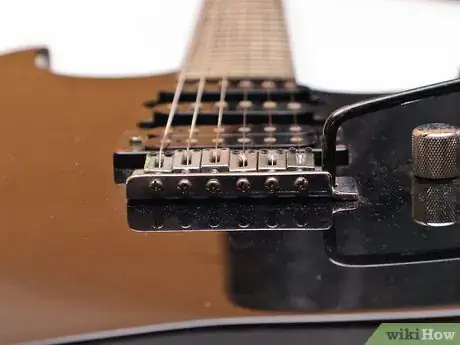
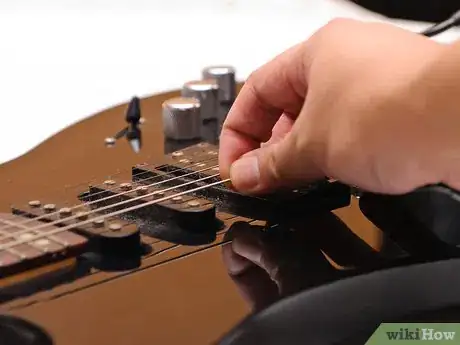
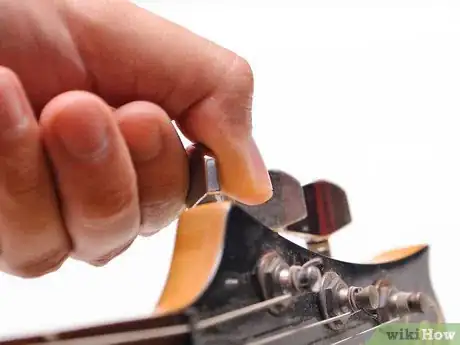


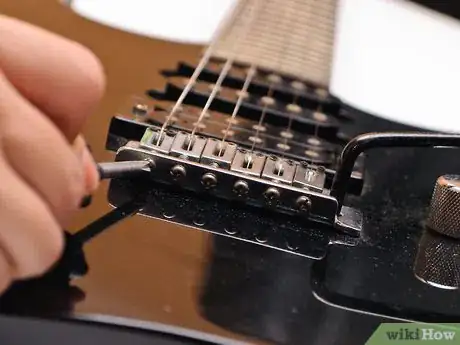
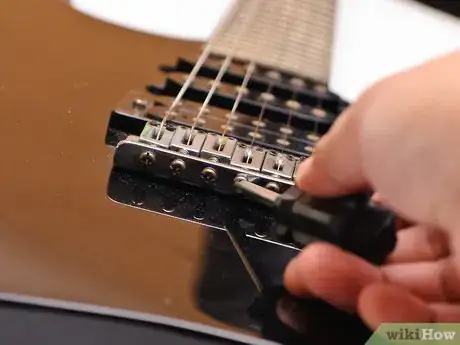
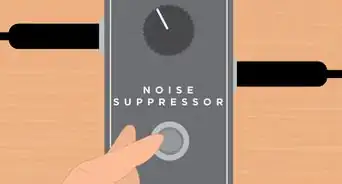

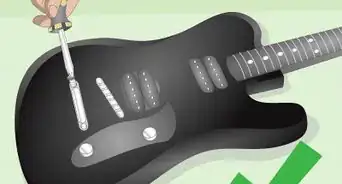

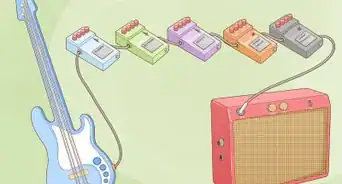
-Step-19-Version-2.webp)

